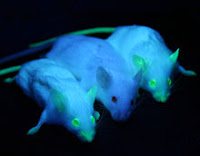Blog Three: Robotics + Art
Arts + Robotics
The world we live in is constantly evolving. The technological world we live in is continuously experiencing new technological advances. The first technological advancements began simply with the light bulb created by Thomas Edison or the printing press, where now there are talks about militarized robots and robots that should interact with people on a civil level. I believe mass media is what led to the nonstop growth of new technology. Humans are on a constant search for a simpler lifestyle, the less hard work and manual labor we can do, the better.
 The main concept I want to discuss is the component of robotics and art. When I think of Robotics one movie sticks out to me more than the rest, "I, Robot". The movie "I, Robot" featuring Will Smith was very entertaining and action packed, but that is not the reason that it stuck out to me after going through this weeks lectures and readings. The reason it sticks out to me is because it utilizes cyborg imagery (Will Smith), as well as robots that display emotions and make judgment. The representation of cyborgs and robots making decisions is represented by the concept discussed throughout this weeks lecture, "cybernetics", which was first developed by Gordon Pask. In the movie, society has mixed emotions with the process of industrialization and the idea of thinking robots around them. Some found it interesting and helpful. While others were scared about the endless possibilities that could come with these robots. What if the robots make mistakes, what if they hurt people, what if they have bad intentions? That is out of the peoples control, and that is what scares people about industrialization, you are never 100 % of what will come from it.
The main concept I want to discuss is the component of robotics and art. When I think of Robotics one movie sticks out to me more than the rest, "I, Robot". The movie "I, Robot" featuring Will Smith was very entertaining and action packed, but that is not the reason that it stuck out to me after going through this weeks lectures and readings. The reason it sticks out to me is because it utilizes cyborg imagery (Will Smith), as well as robots that display emotions and make judgment. The representation of cyborgs and robots making decisions is represented by the concept discussed throughout this weeks lecture, "cybernetics", which was first developed by Gordon Pask. In the movie, society has mixed emotions with the process of industrialization and the idea of thinking robots around them. Some found it interesting and helpful. While others were scared about the endless possibilities that could come with these robots. What if the robots make mistakes, what if they hurt people, what if they have bad intentions? That is out of the peoples control, and that is what scares people about industrialization, you are never 100 % of what will come from it.Sources:
"I, Robot (2004)." IMDb. IMDb.com, n.d. Web. 23 Apr. 2017.
Kreis, Steven. "Printing Press." Historyguide.org. N.p., 2 May 2016. Web. 23 Apr. 2017.
"Military Robots – Detailed Information On Robots Used In Military." Military Robots. N.p., n.d. Web. 23 Apr. 2017.
Pangaro, Paul. "Cybernetics." Cybernetics — A Definition. N.p., n.d. Web. 23 Apr. 2017.
"Thomas Edison Lightbulb." Thomas Edison Muckers. N.p., 20 Feb. 2011. Web. 23 Apr. 2017.





I also thought about the movie "I, Robot" when considering the intersection of robotics and art! It definitely caused people to think about whether regulations should be placed on the seemingly unstoppable process of industrialization. Technology singularity, or the singularity principle, describes exactly what people are afraid of: If robots can express emotions and are self-aware, will they start to think for themselves? What will become of human society once new technology appears to be superior in all aspects?
ReplyDeleteI agree with you that humans are constantly searching for ways to make life simpler with less manual labor. In the movie "I, Robot" there were many scenes where the robots were shown helping people with their daily tasks, such as cleaning and carrying groceries. In my opinion, robots learning how to think for themselves and evolving human-like qualities is an irrational portrayal of society's view on the mechanization of labor. The persistence of these views has a lot to do with how movies and media make this type of evolution in robots seem plausible. As technology continues to advance rapidly, I do not think people should be afraid of industrialization because history shows that it has been a positive aspect for centuries.
ReplyDelete